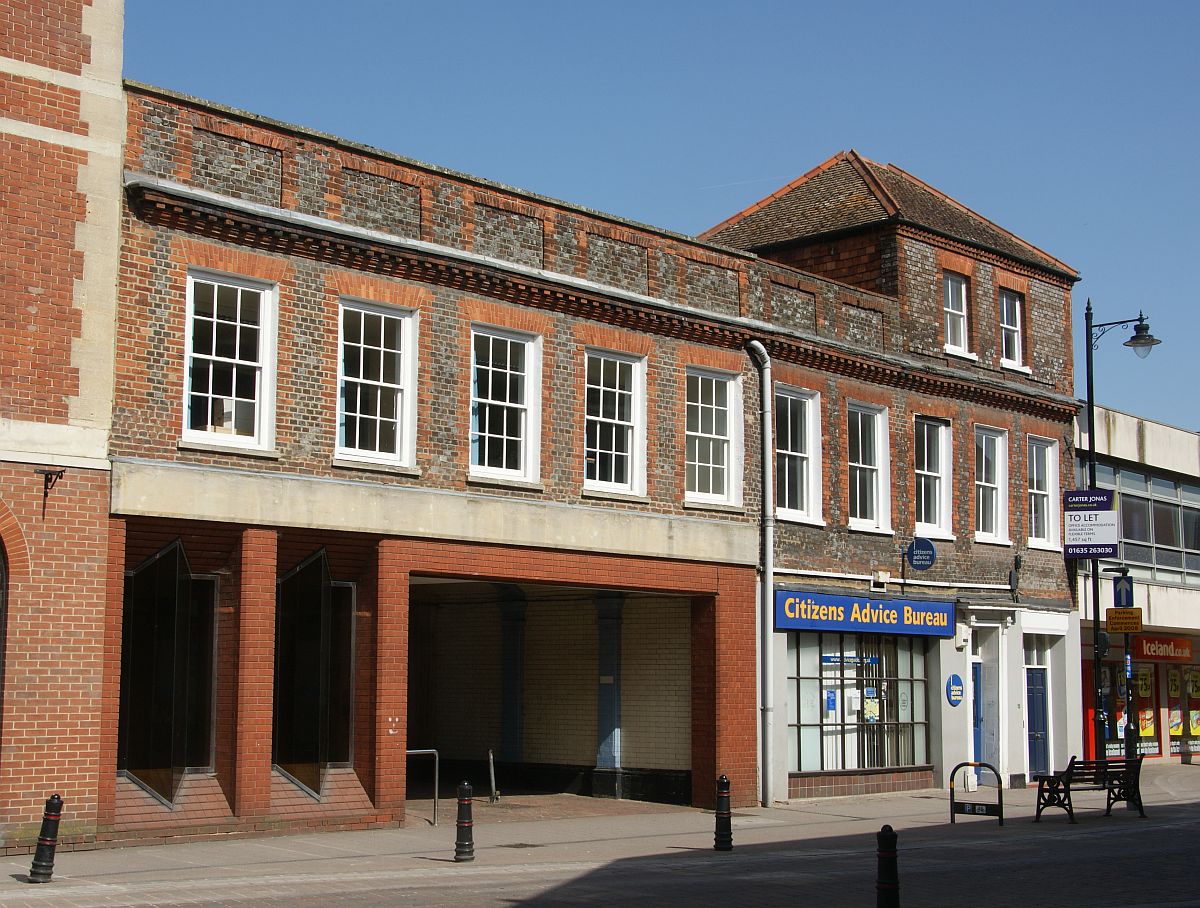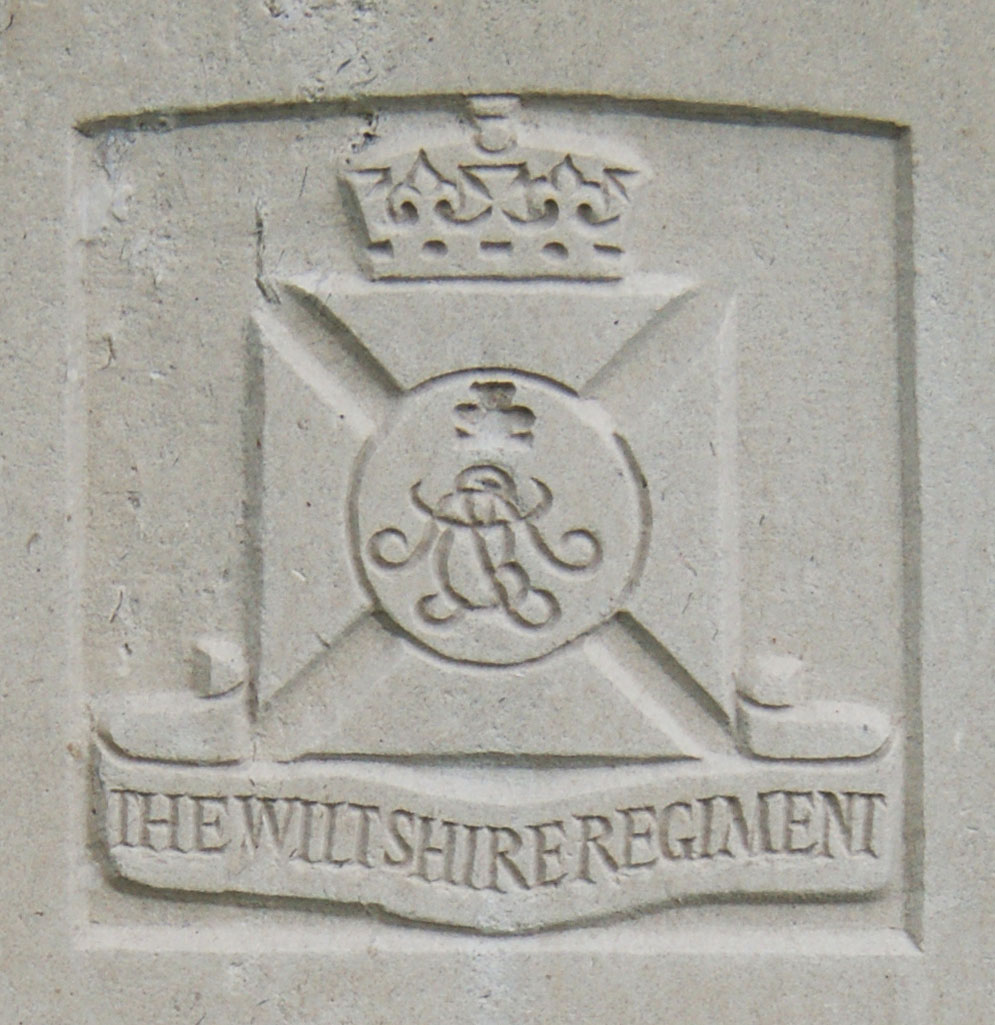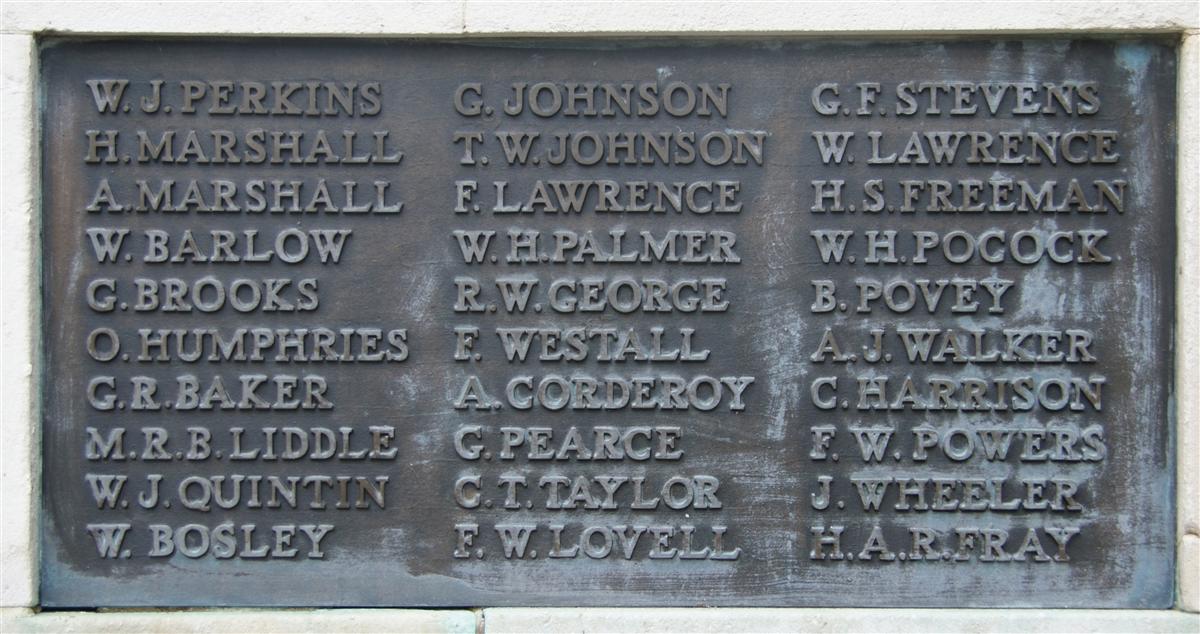Albert Edward Marshall
Private 31972 Albert Edward Marshall, 2nd Battalion, Wiltshire Regiment
Albert was born in 1897, the son of George Henry Marshall and his wife Elizabeth Emma née Kemp. He was the youngest of their six sons; there were also two sisters, one of whom, Elizabeth Emma (1879-1879), died in infancy. The other five were Mary Hannah (1880), Frederick Bishop (1885), Montague George (1890), Walter Percy (1891), and Harry Kemp (1895). All but Albert were born in Newbury, he was born in Wargrave after the family moved there for a few years; they lived in Victoria Road and George worked as a house painter.

The Bartholomew Street frontage of what was once the Atlas Brewery. The Atlas Tap was within the brewery complex, but is is not known exactly where. |
Nothing is known of Albert’s education or employment, though it is very possible that he was employed by the South Berks Brewery as not only his father but at least two of his brothers were on the company’s payroll; Walter worked in the distillery and Harry as a clerk.
He was conscripted into the Army in September 1916 and, after training, was posted to the 2nd Battalion, Wiltshire Regiment in France, which was a part of the 21st Brigade in the 30th Division. He may have joined the battalion in a draft of replacements following their involvement in the 1st Battle of the Scarpe on 9 April 1917 (a six-month training period was typical) and have seen action during the Battle of Passchendaele (3rd Battle of Ypres). However, no records have been uncovered that shed any light on his service until those covering his capture and subsequent death.

The regimental badge of the Wiltshire Regiment, as used on CWGC headstones. |
Obviously a great many of those missing were already dead when their next-of-kin was informed that their whereabouts were unknown. Naturally the families hoped for the best and a postcard from a prisoner of war camp somewhere in Germany. As the German advance had been rapid and overwhelming they had taken thousands of prisoners – there was a greater chance than in previous engagements that a son or husband reported ‘missing’ was still alive.
Families could enquire via the Red Cross for information from the German authorities – however, this would usually take longer than the postcard each prisoner was allowed to send home to let anxious loved ones know he was safe.
In Albert’s case the Red Cross were able to let his father George know that he had been taken prisoner, but had subsequently died in a German military hospital at Avesnes-sur-Helpe on 12 April 1918 and that he had been buried in ‘grave 278’. The cause of death was give as toxic spasm, consequence of wound, but this has been crossed out on his Red Cross record card and tetanus substituted. After the war the dead from each regiment were recorded in a series of publications entitled Soldiers Who Died in the Great War were published by the Stationery Office; Albert’s entry gives his cause of death as ‘died’ – not very informative but this was shorthand for ‘died from causes other than wounds received in action’. This could mean death from sickness, accident or even execution. However, it seems inappropriate in Albert’s case – although his wound may not have been fatal in itself the chances of infection were high and resulted in a great many ‘died of wounds’ entries. It seems that Albert’s misfortune in contracting tetanus from his wound (tetanus is a very nasty way to die) rather than a more common infection like septicaemia or gangrene meant that he was deemed to have died of illness rather than his wound.
The Red Cross cards relating to Albert are somewhat confusing in regards their communication with Albert’s father; it seems that information was communicated to the family on 30 July 1918 and 23 January 1919 (the nature of the information is unclear). However, from the local newspaper it appears that the family had an alternative source:
Newbury Weekly News, 1 August 1918 – Local War Notes
Mrs A Marshall, of 7, Sarum-cottages, Enborne–road, has been informed that her husband, Pte A Marshall, 2nd Wilts Regt, who was reported missing since March 21st, is alive although wounded, and a prisoner of war in Germany.
The cruel news of his death on 12 April must have arrived before long after a short period of relief that he was alive.
Some slightly confusing news was printed later that year:
Newbury Weekly News, 12 December 1918 – Local War Notes
The family of Mr and Mrs George Marshall, in addition to the two sons already lost during the war, have now experienced a further loss in the death of their fourth son. There are now two others left, one with the Army in France and the other in the Navy.
 Albert's name on Newbury War Memorial, below that of his brother Harry. (upper left) |
The two other sons lost during the war were Harry, who was killed in action in 1916, and Albert. This item refers to Montague, who signed up in 1914 only to be discharged a few days later. It is possible that he showed signs of mental illness; he died in the County Asylum at Fairmile, near Cholsey, and was buried there on 2 December 1918. Frederick was the ‘one with the Army in France’ and Walter the sailor.
For more information on Albert’s brothers see Harry’s story.
Albert’s remains lie today in grave D.3 at Avesnes-sur-Helpe Communal Cemetery.
Locally he is remembered on Tablet 5 of the Newbury Town War Memorial, and also on the roll of honour and memorial board in St Nicolas’ Church.

